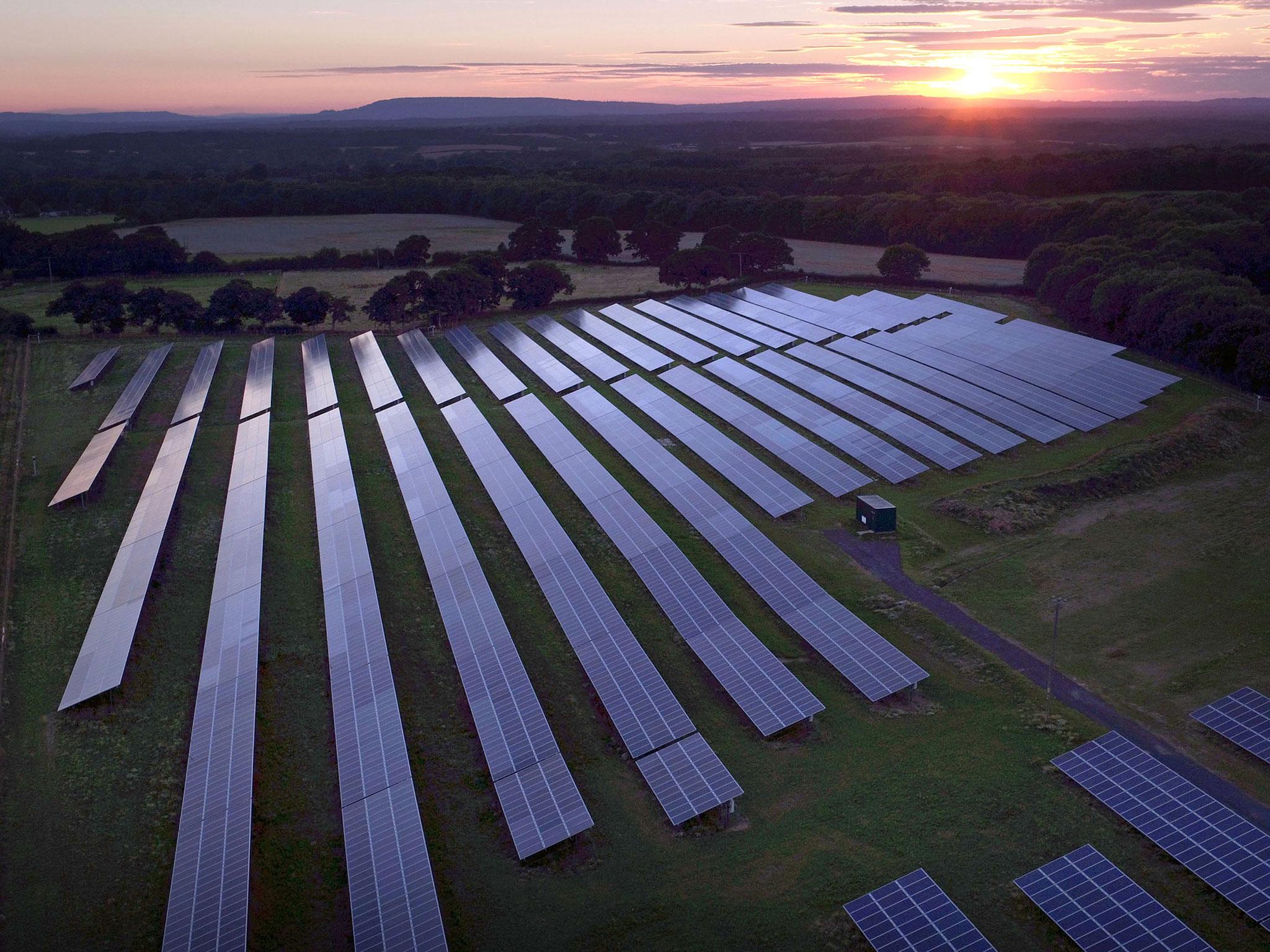Solar panels surpass coal-fired electricity in previously ‘unthinkable’ feat
For six months until September, more electricity came from sunlight than coal-fired power stations

Solar panels generated more electricity than coal in the past six months in a historic year for getting energy from the sun in the UK, according to a new analysis.
Research by the Carbon Brief website found that solar generated nearly 7,000 gigawatt hours of electricity between April and September, about 10 per cent more than the 6,300GwH produced by coal during the same period.
The figures represent a dramatic turnaround in the UK’s electricity supplies.

The first ever day when solar produced more than coal was only on 9 April – when there was no coal-fired electricity for the first time since 1882. But then May became the first ever month when this happened.
Solar capacity nearly doubled in 2015, but has been hit hard by cuts to Government support, which is currently needed to persuade investors to build any kind of power generation, including fossil fuels.
James Court, head of policy at the Renewable Energy Association, said: “Solar overtaking coal this summer would have been largely unthinkable five years ago.
“This new data shows its popularity amongst homeowners and businesses and its falling costs. Now that we have a significant global and domestic industry, solar is one of the cheapest forms of power.
“Government policy stability is critical, however. Solar PV deployment in August 2016 was one third of what it was in August 2015 due to the sudden and severe changes to policy in the past year.”
The trend is unlikely to continue. Because there is less sunlight and a rise in demand for heating and lighting during the winter months, coal will once again overtake solar.
However scientists have recently been working on using a novel technology to store energy from the summer sun until it is needed in the winter.
And energy storage systems, which solve potential intermittency problems with some renewable generators, have been increasing.
“The role for solar is significantly expanding as we develop complementary energy storage technologies, but we need government support to continue to achieve its potential,” Mr Court said.
A report by the Renewable Energy Association found there were now 35 grid-scale electricity storage projects and at least 1,500 residential ones, totaling about 3.2GW.
These include hydro schemes, where electricity can be used to pump water uphill so that it can be used to drive turbines when needed.
Gluts of renewable electricity can cause prices to go very low or even negative, which happened in Germany among other countries.
The latter scenario means those with storage capacity can make money twice: once when they are paid to take electricity from the grid and again when the electricity is used at a time when electricity prices turn positive again.
Frank Gordon, a senior policy analyst at the Renewable Energy Association, said: “Energy storage has great potential in the UK, and can unlock billions worth of savings according to the Government’s advisers.
“Our research indicates that there are multiple gigawatts of capacity that are being proposed or are ready to be developed, but a joined-up and supportive policy structure is critically needed.”
The Government announced last year that it planned to phase out what it called “unabated” coal-fired power stations by 2025.
This suggests emissions would need to be at least partially “abated” or reduced by that date. The Government has not said what level would be allowed.
Juliet Davenport, chief executive of renewable energy supplier Good Energy, said: "Renewable energy has been an unbelievable success story in the UK and around the globe.
"When I started my company 15 years ago, you could fit the whole UK renewable energy industry into a small room, and now nearly 25 per cent of the UK’s power comes from renewables.
"We've also seen a renewable revolution on people's rooftops with more than 750,000 UK homes generating their own energy from the sun.
“As clean technology advances, Britain is bidding farewell to coal. The transition to a 100 per cent renewable future is within Britain's grasp.”
Join our commenting forum
Join thought-provoking conversations, follow other Independent readers and see their replies
Comments
Bookmark popover
Removed from bookmarks